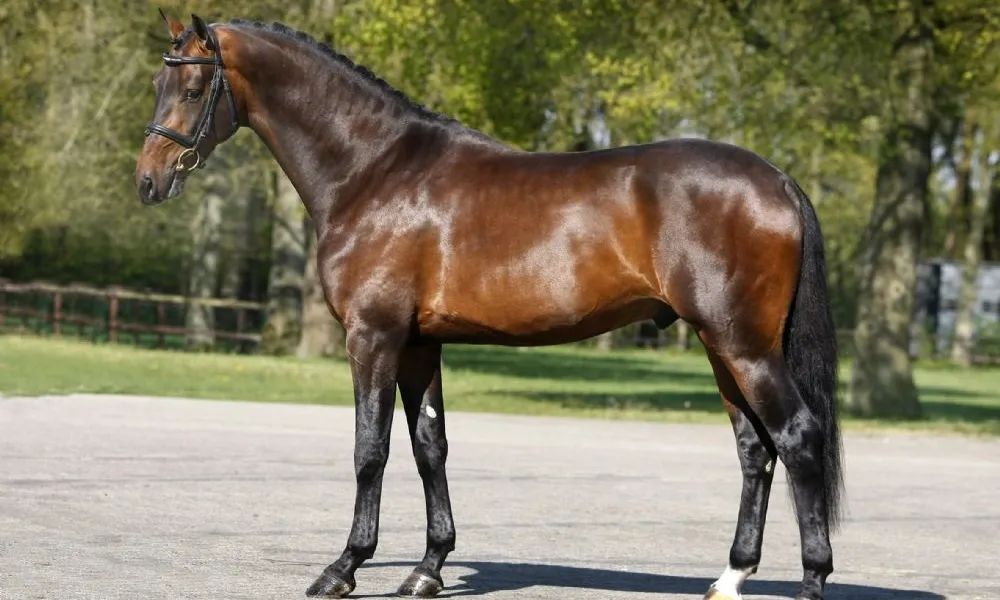The Dutch Warmblood horse, known for its elegance, strength, and versatility, has become a favorite among competitive riders and horse lovers alike.
Bred in the Netherlands with a clear focus on performance, this breed has dominated international equestrian sports for decades, especially in show jumping and dressage. But beyond the arena, Dutch Warmbloods also have a calm temperament and trainable nature that make them ideal partners for riders of all levels.
A Brief History of the Breed
The story of the Dutch Warmblood begins in the mid-20th century. After World War II, there was a shift in how horses were used across Europe. No longer needed for farming or military purposes, breeders in the Netherlands began to focus on creating a horse that was elegant, athletic, and suitable for modern sports.
To achieve this, Dutch breeders combined the best traits of local farm horses with refined breeds like the Thoroughbred and Trakehner. This careful selection process led to the creation of the Royal Dutch Warmblood Studbook (KWPN), which is now one of the most respected horse registries in the world. KWPN horses are known for their excellent movement, powerful build, and exceptional minds.
Characteristics That Set Them Apart
Dutch Warmbloods are typically between 16 and 17 hands high and have a well-proportioned body. Their heads are refined, their necks are long and arched, and they have a strong, sloping shoulder—ideal for movement and jumping. The breed standard emphasizes balance, soundness, and beauty, which is why they often stand out in any show ring.
But it’s not just looks that matter. Dutch Warmbloods are bred for performance. Whether it’s the controlled grace of dressage or the explosive power of show jumping, these horses are built to win. They’re also known for their intelligence and willingness to learn, which makes training more of a partnership than a chore.
Types Within the Breed
Interestingly, the Dutch Warmblood isn’t just one type of horse. The KWPN registry is divided into several categories, depending on the horse’s specialty:
- Dressage Type (KWPN-D): These horses are bred with more elasticity and upward movement. Their gaits are fluid, expressive, and ideal for advanced dressage movements.
- Jumping Type (KWPN-J): Bred for quick reflexes and scope, these horses excel in the jumper ring. They’re courageous, athletic, and have a keen instinct for finding the best route over fences.
- Harness Type (KWPN-T): Known for high knee action and flashy presence, these horses are popular in driving competitions.
- Gelderlander: A versatile type, originally used for both riding and driving, and known for its strength and stamina.
Each of these types is selectively bred, with performance tests and inspections that help maintain the quality and focus of the bloodlines.
Temperament and Trainability
One of the reasons Dutch Warmbloods are so loved by riders is their temperament. Despite their elite performance abilities, they are generally calm, friendly, and eager to please. This balance makes them suitable not only for professionals but also for ambitious amateurs.
They respond well to consistent, positive training methods and often form strong bonds with their riders. These horses are alert but not overly reactive, making them reliable partners in high-pressure competition settings.
Health and Longevity
Dutch Warmbloods are generally healthy horses, thanks to the KWPN’s strict breeding standards. The registry screens for common issues such as osteochondrosis, a joint disease that can affect young horses, and prioritizes conformation and movement that support long-term soundness.
With proper care, nutrition, and regular veterinary attention, Dutch Warmbloods can remain active and healthy into their late teens or even early twenties. Their durability and consistent performance are part of what makes them such a solid investment in the sport horse world.
Global Impact
You don’t have to look far to see Dutch Warmbloods making headlines. Riders like Charlotte Dujardin, Edward Gal, and Beezie Madden have all competed on KWPN horses at the highest levels. From Olympic gold medals to World Equestrian Games titles, Dutch Warmbloods have proven themselves on every major stage.
Outside of competition, they’re also becoming increasingly popular in other disciplines like eventing and even trail riding, thanks to their versatility and dependable nature.
Is the Dutch Warmblood Right for You?
If you’re looking for a horse that combines beauty, brains, and athletic ability, the Dutch Warmblood should be at the top of your list. They’re ideal for competitive riders but gentle enough for dedicated amateurs. However, they do best with regular training and plenty of activity—this is not a breed that enjoys standing idle in the pasture.
Whether you’re aiming for the winner’s circle or simply want a talented equine partner for your riding goals, the Dutch Warmblood is a breed that offers incredible potential and unmatched presence.

